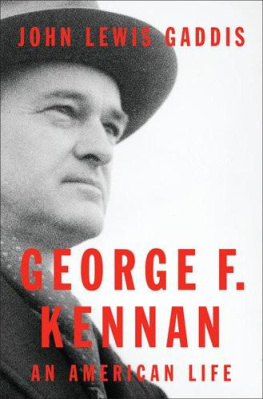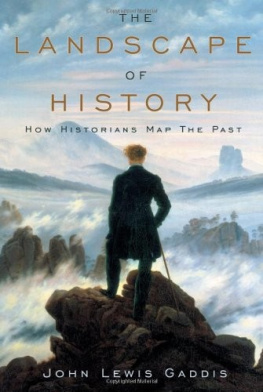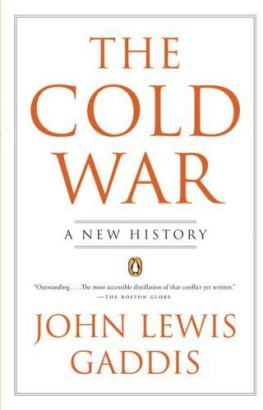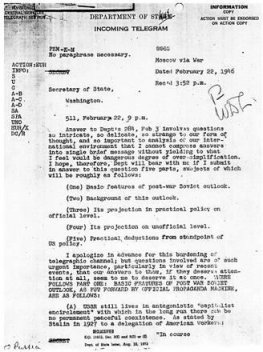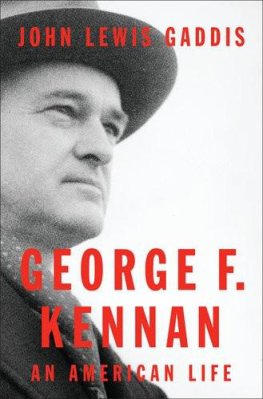ACKNOWLEDGMENTS
This book has taken so long to finish that the debts Ive incurred remind me of the national deficit. Im sure that Ive missed some of these in what follows, so let me begin with apologies to all not mentioned to whom I owe thanks.
My greatest debt, of course, is to George and Annelise Kennan, for the help they gave, the trust they showed, and the patience they maintained over so many years. I also owe much to my other intervieweesalmost fifty of themwhose memories took me beyond what the documents showed. The younger Kennans, Grace, Joan, Christopher, and Wendy, have also in recent years assisted me with this project: I am particularly grateful to Joan for the family correspondence, photographs, and reminiscences she has provided, and to Christopher for his visits with my Yale undergraduate seminar on The Art of Biography when it focused on his father. Other members of the extended Kennan family shared stories, sources, and time, especially Eugene and James Hotchkiss, Douglas James, Ted Vogel, andcertainly not leastGeorges secretaries over more than half a century, Dorothy Hessman, Constance Goodman, Janet Smith, Elizabeth Stenard, Terrie Bramley, and Betsy Barrett.
Archivists and staff at Princetons Seeley G. Mudd Manuscript Library have facilitated my work on Kennan since the mid-1970s. Hence my gratitude to that admirable institution and its directors, Nancy Bressler, Ben Primer, and most recently Daniel Linke, who organized the recataloging of Georges papers after his death. Adriane Hanson, who prepared an excellent new finding aid, helped me reconcile old with new box and folder numbers, and locate photographs. Jean Holliday, the Mudd Librarys receptionist and reading room supervisor for many years, made sure that we researchers got to know one another: I owe to her several friendships that I still cherish. For their responses to particular queries, I also should like to thank Tad Bennicoff, of the Mudd Library staff; Christine Di Bella and Erica Mosner, of the Institute for Advanced Study Archives; Michael Devine and Samuel Rushay, of the Harry S. Truman Library; Susan K. Lemke, of the National War College Archives; Gary Richert, director of alumni relations at St. Johns Northwestern Military Academy; Tim Ericson, of the Wisconsin State Historical Society; Craig Wright, of the Herbert Hoover Library; and of course Judith Schiff, Diane Kaplan, William Massa, and their colleagues at Sterling Library Manuscripts and Archives, Yale University.
A generation of research assistants has, at one time or another, worked with me on this book. They include Anne Louise Antonoff, Ryan Floyd, Michael Gaddis, Victor Kaufman, Matthew Kennedy, Victor McFarland, Ned Mitchell, Michael Schmidt, and Andrew Scott: all have extended the biography beyond what it otherwise would have been. Igor Biryukov, Andrey Ivanov, Jeffrey Mankoff, and Adam Tooze have helped with translations, and I am also grateful to Rene Bystrom, Kimberly Chow, Jack Cunningham, Robert English, Barton Gellman, John Lamberton Harper, Mark Lawrence, Melvyn P. Leffler, Geir Lundestad, Douglas McCabe, Philip Nash, Christian Ostermann, Thomas Schttli, Strobe Talbott, and Nicholas Thompson for passing along Kennan information obtained in their own research.
Institutional support has come, over the years, from the Guggenheim Foundation, Oxford University, the Norwegian Nobel Institute, and the Woodrow Wilson International Center for Scholars, as well as my home universities, Ohio and Yale. Fred Greenstein and Richard Ullman arranged a semester for me at Princeton University in 1987, where I was able to complete much of the early research for this book. Others have helped in more specific ways: Avis Bohlen spent a morning talking with me about her father; Mark Bradley showed me Milwaukee sites that I would write about; Mimi Bull sent me her correspondence with Kennan while she was working as his research assistant; Patricia Woolf shared reminiscences about the Institute for Advanced Study; and S. Frederick Starr, while president of Oberlin College, arranged for me to join the second George Kennan on a memorable visit to the house, in Norwalk, Ohio, where the first George Kennan had grown up.
Teaching, I discovered long ago, is how I learn, so the students Ive had in my classesespecially my Yale biography seminarhave been my collaborators, whether they realize it or not. For his role in the early placement of this book, I should like to thank Gerald McCauley, then more recently Andrew Wylie, of The Wylie Agency, to whom I am grateful not just for his help with this book, but also for his willingness to support the scholarship of several of my younger colleagues and graduate students. Eamon Dolan, my editor at Penguin, gave the manuscript the bracingly critical final reading that it badly needed, while Emily Graff has carefully but tactfully overseen the production process, with the valuable assistance of Janet Biehl, Barbara Campo, Roland Ottewell, and Don Homolka. Scott Moyers, first at Penguin, then at Wylie, and now back at Penguin, has in every way made this project his own, and I am deeply grateful.
Friends and family sustain projects like this in ways less tangible but no less important. So my special gratitude, for contributions the nature of which they will understand, goes to Paul Kennedy and Cynthia Farrar, Charles Hill and Norma Thompson, Gaddis and Barclay Smith, Charles Ellis and Linda Lorimer, Sam and Sherry Wells, Henry and Nancy Kissinger, Susan Ferber, Vladimir Pechatnov, Bill Miscamble C.S.C., Nancy Stratton, Jack and Rebecca Matlock, Roger Hertog, Barbara Gaddis, Michael and Tina Gaddis, David Gaddis, Eliza Shaw Valk, andit would take another book of this size even to begin to explain how muchToni Dorfman.
J. L. G.
ALSO BY JOHN LEWIS GADDIS
The Cold War: A New History
Surprise, Security, and the American Experience
The Landscape of History: How Historians Map the Past
We Now Know: Rethinking Cold War History
The United States and the End of the Cold War:Implications, Reconsiderations, Provocations
The Long Peace: Inquiries into the History of the Cold War
Strategies of Containment: A Critical Appraisalof Postwar American National Security
Russia, the Soviet Union, and the United States: An Interpretive History
The United States and the Origins of the Cold War, 19411947
BIBLIOGRAPHY
INTERVIEWS
Adams, Ware:
C. Ben Wright, September 30, 1970, Washington, D.C., Wright Papers.
Ball, George:
JLG, October 12, 1987, Princeton, N.J.
Berezhkov, Valentin:
JLG, September 21, 1991, Athens, Ohio.
Berlin, Sir Isaiah:
JLG, November 29, 1992, Oxford, England.
Black, Cyril E.:
JLG, November 24, 1987, Princeton, N.J.
Bohlen, Charles E.:
C. Ben Wright, September 29, 1970, Washington, D.C., Wright Papers.
Bowie, Robert R.:
JLG, December 10, 1987, Princeton, N.J.
Bradt, Constance Kennan:
Joan Kennan, no date, Joan Kennan Papers.
JLG, November 13, 1982, Rome, N.Y.
Bundy, McGeorge:
JLG, December 17, 1986, New York, N.Y.
Bundy, William P.and Mary A.:
JLG, December 6, 1987, Princeton, N.J.
Crawford, William A.:
C.Ben Wright, September 29, 1970, Washington, D.C., Wright Papers.
Cumming, Hugh S., Jr.:
JLG, April 17, 1984, Washington, D.C.
Davies, John Paton and Patricia:
JLG, December 78, 1982, Asheville, N.C.
Davies, Richard T.:
Peter Jessup, November 9, 1979, ADST Oral History Project.

